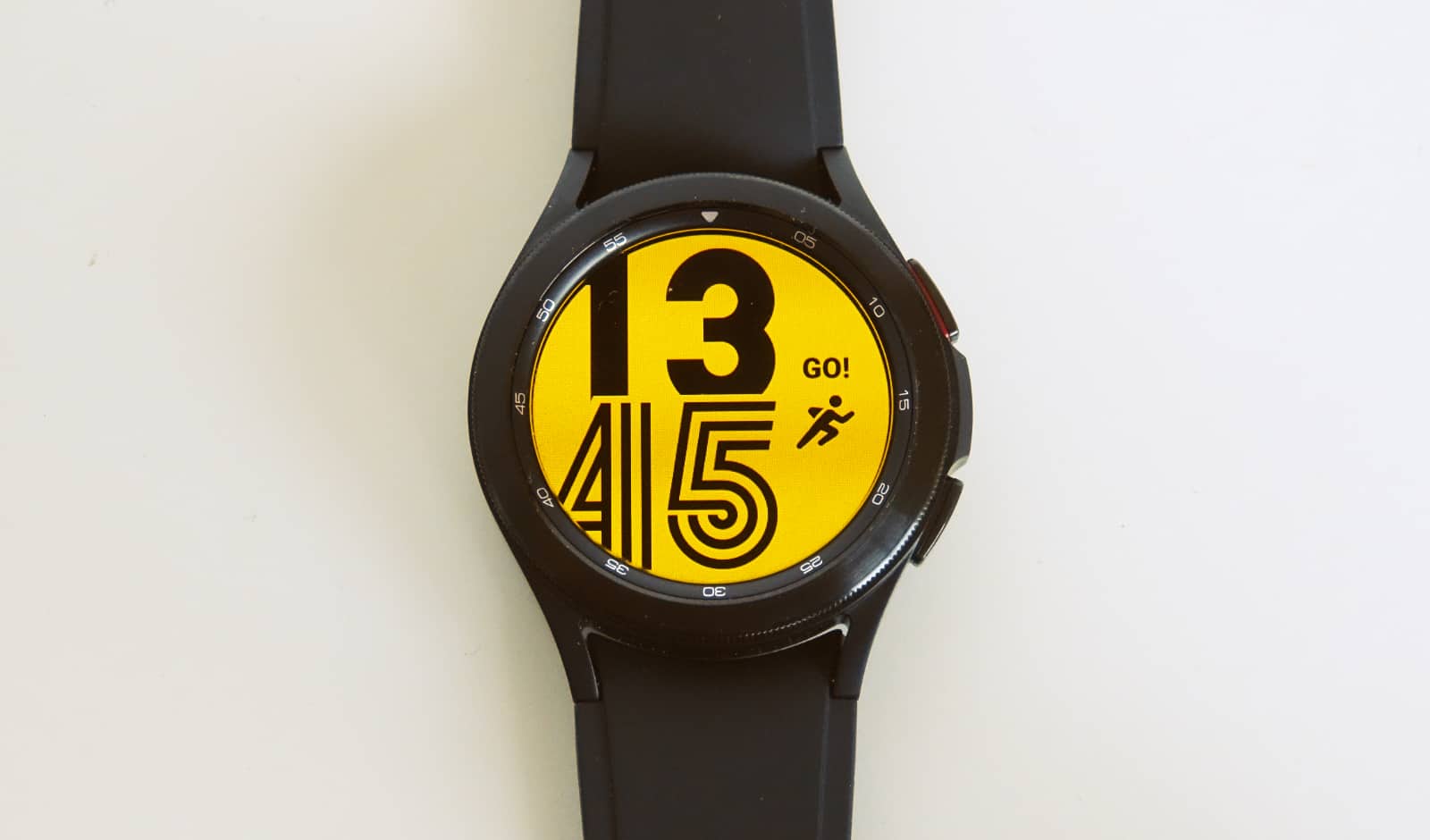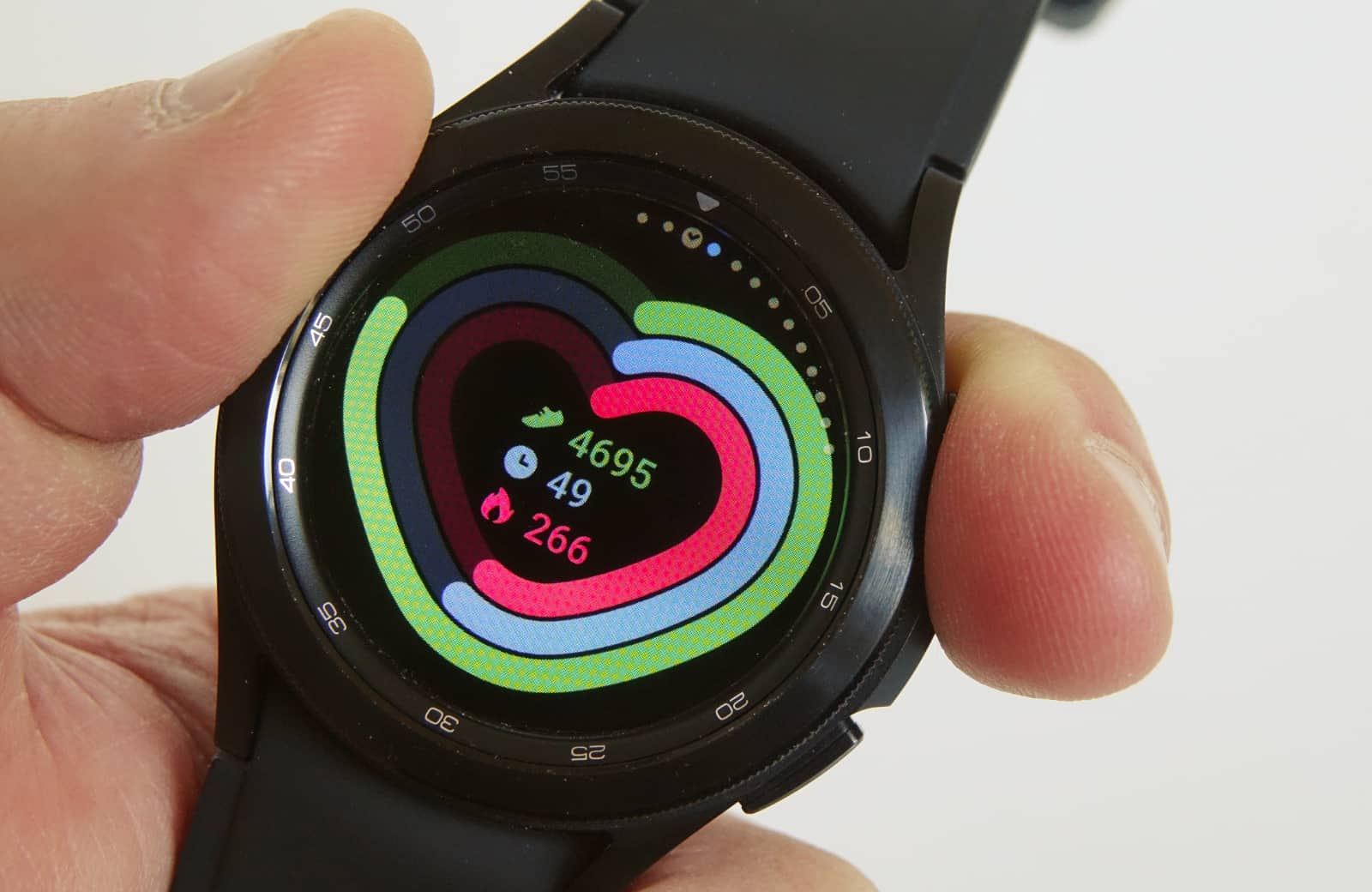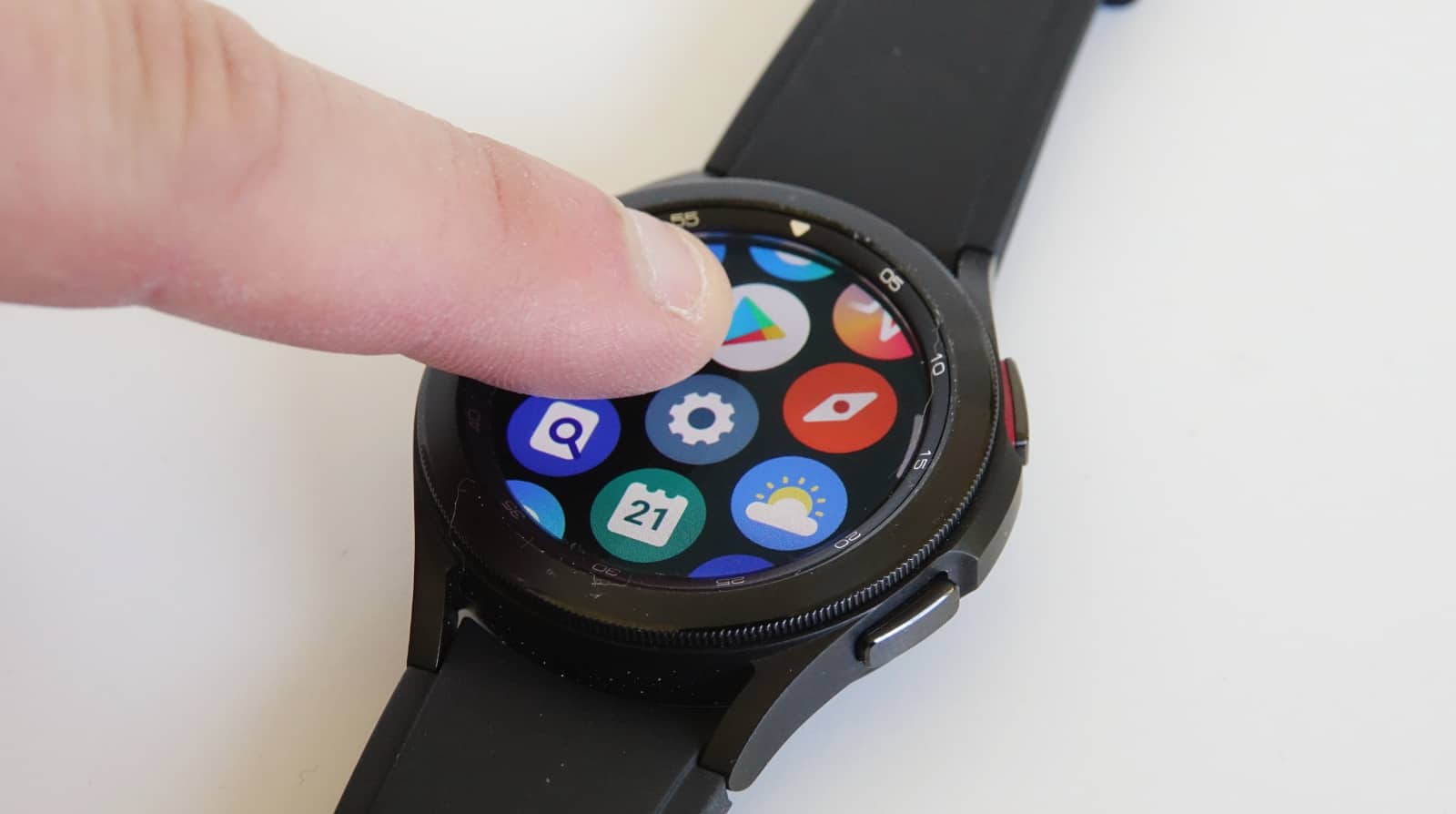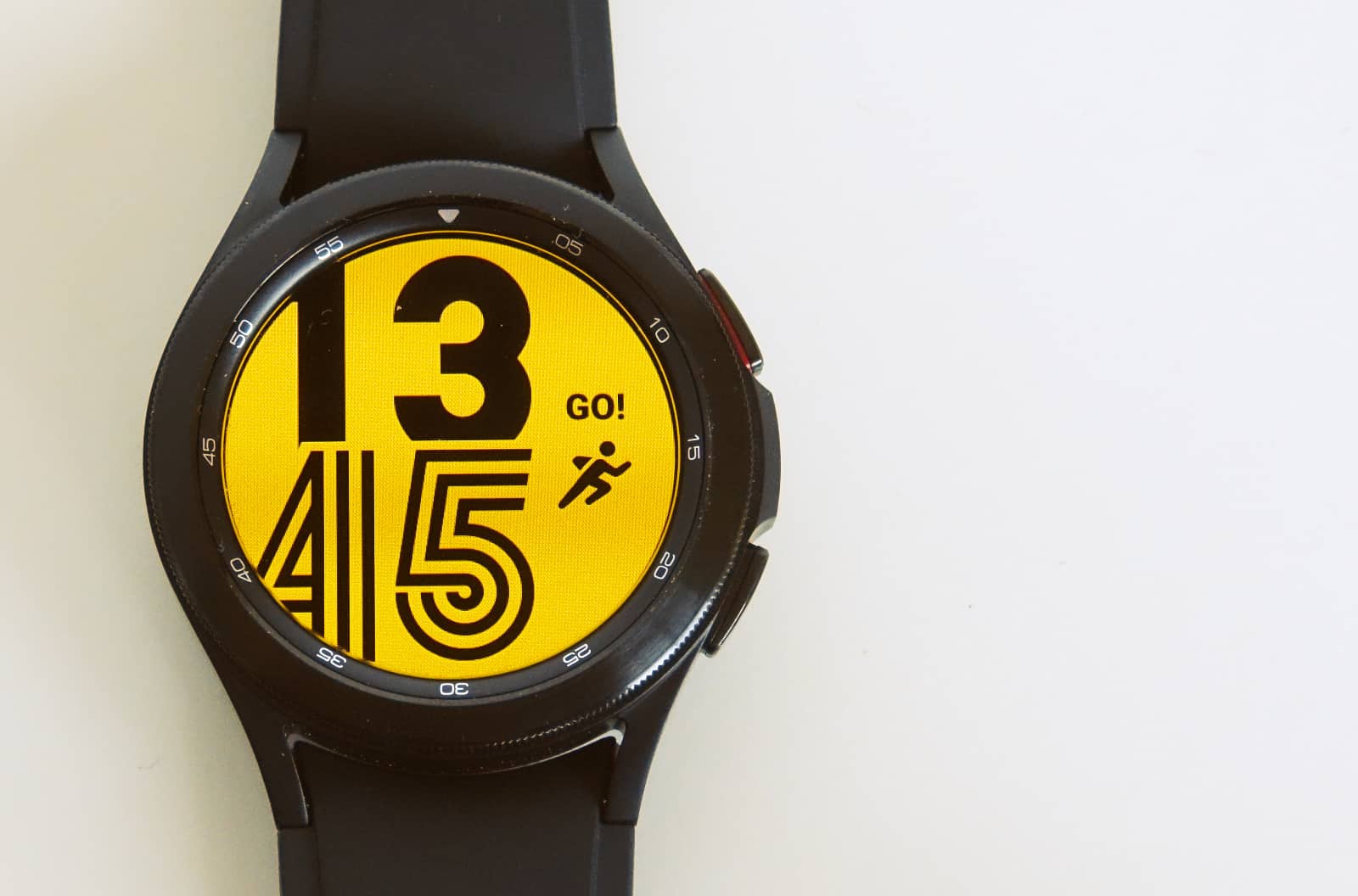Quick review
The good
The not-so-good
Samsung’s latest smartwatch takes Google’s Wear OS and almost literally revolves around your life. Is the Galaxy Watch 4 Classic the best wearable around, or does it fall short?
I woke up every day at five while reviewing Samsung’s latest wearable, the Galaxy Watch 4, and not because I needed to. I didn’t want to wake up at five, but the Watch 4 forced me into that position, buzzing on my wrist that I needed to pay attention to an alert.
Unfortunately, that alert is indicative of the Watch 4’s biggest problem, which — spoiler alert — may be a problematic battery. Can the rest of the package save the WearOS Galaxy Watch 4 Classic?
Design and features
A new watch with a familiar style, Samsung’s Galaxy Watch4 Classic borrows the classic circular style we’ve seen from Samsung’s wearables over the past decade, with a change really going under the hood.
It’s the first Samsung Galaxy Watch to have Google work on the platform with it, moving on from the Tizen operating system Samsung used to use on its wearables and over to Google’s Wear OS, and that means some things are changing.
Not that you’d notice from the look: glance your way at the Watch4 Classic and you’d think it looked like either a classic analogue watch (but with a screen), or one of Samsung’s other wearables with the rotational bezel controllable. Because that’s exactly what it looks like.
Regardless of whether you opt for the 42mm or 46mm Watch 4 Classic, you’ll find a circular screen (30.4mm 396×396 on the 42mm, 34.6mm 450×450 on the 46mm) protected by Corning’s Gorilla Glass DX and encapsulated by a round ring that you can control the watch with.
Under the hood, Samsung is using its own Exynos W920 dual-core chip, 1.5GB RAM, 16GB storage, and that Wear OS effort worked on by both Google and Samsung, not one over the other.
As far as features go, this one is pretty set, with the accelerometer, barometer, light sensor, and a “BioActive” sensor that combines a bunch of features, including heart rate, ECG, and body composition analysis, able to analyse muscle mass, body fat, the water in your body, and so on. The inclusion of that ECG — an electrocardiograph — is particularly notable, as it has been missing in action in Australia for the Galaxy Watch range.
It joins the assortment of Bluetooth, WiFi, and GPS, and depending on the model you get, you may find 4G LTE under the hood, plus support for Near-Field Communication (NFC) for mobile payments over Google Pay and Samsung Pay.
In-use
Grab the watch, strap it on, and you’re good to go, with the Watch offering an assortment of clocks for you to keep track of the world, as well as complications to make them your own. Depending on the face you’re after, you should be able to stylise them using the Samsung Galaxy app, or even using an extra app, though it means you’re getting a good choice of options.
Using the watch is a little different this time, as well, thanks in part to it being Wear OS skinned with Samsung’s One UI, making it like the older Samsung Galaxy Watch models, but also totally different. It means you’ll swipe up on the main watch face to sort through installed apps, holding down on the icons to move them around. That’s totally different from the circular interface of previous Galaxy models, though you still get one of those.
The circular ring on the Watch 4 Classic is there like it was last year, even if it’s missing on the standard Watch 4. Using it means you’ll see both notifications and micro apps, scrolling to the left for the former and to the right for the latter. With the micro apps, you can use the Galaxy Wear app to move them around, reorganising and deciding on the apps you want quick access to, which is what these are for.
Performance
With a new chip under the hood and 1.5GB RAM, you probably won’t be surprised to find the Galaxy Watch4 Classic handles most of what you can throw its way with ease, even if most of what you’re going to use a watch for is the time. There’s a little bit of lag as you scroll through the apps with the control wheel, but for the most part, it’s quick and easy, and the whole thing is quite responsive.
Indeed, most of the time, we found ourselves checking the time or changing a watch face to check the time in a different way, though apps can run here, and you will find an operating system that scratches more of your phone’s needs than previously.
As much as we loved Tizen on the previous Galaxy Watch and Samsung Gear models, a well-developed app ecosystem wasn’t a prize-winning point. Far from it.
With Google’s Wear OS, there’s more to talk about with apps aplenty, and not just for changing the face of what you look like. Google’s Play Store gives you two different sections — “Watch apps” and “Watch faces” — each with what you’d expect to find within.
In Watch apps, there’s Spotify, Shazam, Messenger, health apps for heart rate and reminders for drinking water, Australia Post, checking the weather, UV indexes, and so on and so on. The apps in the Play Store section for a Wear OS watch aren’t specifically for the Galaxy Watch4 Classic, but rather installed on both the phone and the watch, talking to both.
With Watch faces, you can probably guess what’s here, with an assortment of faces designed to look like other watches or totally unique, giving yourself the ability to present your wrist and the time in a way more representative of you, and beyond what Samsung provides out of the box.
Health
The other side of the performance comes down to health, and it’s here that Samsung offers quite a bit.
You’ll need to download the Samsung Health Monitor from the Samsung Galaxy Store to make the ECG work, making it feel like you’ll need a Samsung phone to get it working at all. While the Galaxy Watch 4 doesn’t technically need a Samsung phone to work and is compatible with Android in general, access to the Galaxy app marketplace is specific to Samsung phones, meaning until Samsung throws its Health Monitor ECG app on Google Play, you’ll only be able to run it on a Samsung phone.
Once you do, the ECG functionality works about the same as it does on an Apple Watch, and even the first ECG wearable Australians could see, the Withings ScanWatch: hold a finger to the main button, don’t move, and let the electrocardiograph check your vitals.
You’ll get one of those spiked heart graphs like what a hospital shows, and while it can’t be used as a check on if you’re having a heart attack, it can give you an alert if you’re suffering from atrial fibrillation, which is a nice way of saying “go seek help now”.
You’ll also find support for heart rate and alerts to get you up and moving fairly regularly, though much of the other cool stuff expected in the Watch is missing in action. Samsung’s inclusion of Bioelectrical Impedance Analysis — the main new thing in its “BioActive” combination of sensors — doesn’t seem to do a whole lot locally just yet. The Health Monitor app for the ECG suggests “blood pressure” should be supported, complete with the line:
“To use this feature, you need a Galaxy Watch Active 2 or later model that was released to a country where this feature has been approved.”
The Watch4 Classic is definitely a later model, and seems like it should open up blood pressure tracking as well as a bunch of other features — bioelectrical impedence could provide a wealth of information — but we can’t seem to see any of it, let alone see whether the sensor is actually doing something.
It’s a cool idea that could help make the wearable more interesting, but as yet feels largely unfinished. As if to say you have a feature, but no way of making it useful yet.
Battery
And as cool as the Galaxy Watch 4 Classic is, and as nicely designed as the whole thing looks and feels, the battery life hurts the package. It seriously dents the Watch 4’s chances of being useful.
If you’re lucky, you’ll hit a full day of battery life. However, throughout our Galaxy Watch 4 review period, we found the smartwatch would run out of charge just shy of a full 24 hours, losing charge at around the 22 hour mark.
Bizarrely, when we had finished writing this review, almost like kismet, Samsung released an update that addressed aspects of this, allowing the battery to run for a little longer. While it’s had less testing, we found closer to 34 hours with this update, which is a slight improvement, but hardly a battery life worth cheering for, and still suggestive that you’ll need to charge it overnight.
Value
That battery life dents the value a little, affecting what was otherwise a competitive price tag.
Priced from $549, the Galaxy Watch4 Classic starts $50 lower than the Apple Watch Series 6 and offers similar features, at least as far as health tracking goes. You can find the Watch4 Classic in the 42mm WiFi model we reviewed for that $549, with a bigger 46mm model for $599. If you want to add 4G LTE to the package, that’ll cost you $50 more on either side, charging $649 and $699 for the 42mm and 46mm models respectively.
Those aren’t bad prices when compared against their obvious competitor, the Apple Watch Series 6, which starts at $599 and $649 for the 40mm and 44mm models they’re matched with.
What needs work?
But even if you find the design great and the value achievable, the watch faces versatile, and the health package quite solid overall, the battery life is hard to grapple with.
You might think that’s a small thing, that smartwatch battery life typically doesn’t fare well anyway, so we probably shouldn’t expect so much, but there are other factors that dent the Watch 4 Classic’s battery.
One is that Samsung’s wearable chews through a rather ridiculous amount of battery life while you sleep, and can lead you to another issue. Nightly, we found after a day of use, going to bed with 30 percent of charge would mean seven hours later, it would have three percent left. That’s roughly one third of the Watch 4 battery life going away while you sleep, a result that borders on crazy, especially since you’re not likely getting notifications or doing a lot of streaming there.
Frustratingly, that battery life diminishing means that at one point, Samsung’s Watch 4 is going to buzz your wrist and wake you up, asking whether you want to switch to its power saving mode.
In our experience, that would happen every morning at 5AM, and every morning, we’d groggily complain that the new watch on our wrist wasn’t able to automatically switch into a low power mode like the Apple Watch can, and was instead disrupting our sleep schedule because it was chewing through battery and alerting us to that reason.
Every day during the Galaxy Watch 4 review period, I would wake up at five. And every day, I would find myself frustrated with how silly this was.
The battery life of the Series 6 Apple Watch isn’t amazing, either, typically hitting a day max, but maybe a little more. Yet you can trust that it won’t bother you if it needs a charge while you sleep, and that watchOS will tell you if the watch needs a charge before you go to sleep.
Not so with the Galaxy Watch 4 Classic, which more than happily puts you in a bitter mood for the rest of the day, sleepy-eyed AF after vibrating on your wrist to charge it or stick it in power saving mode ASAP. It’s frustrating overall, not just because it makes for a tired and cranky reviewer, but also because Samsung’s Tizen-based Galaxy Watches handled battery life much better than this thing does.
Much like how the Galaxy Z Flip 3 struggled with battery life, the Android-based Watch4 Classic fails to hit the near two days of battery the Galaxy Watch3 could manage, even though it was last year’s watch and has now been superseded.
We’re sure that Samsung collaborating with Google has helped its smartwatch platform in ways, but in our experience, WearOS has never yielded fantastic battery life, and what we found in the Watch 4 Classic hasn’t changed our feelings there, either.
Final thoughts (TLDR)
The battery life leaves Samsung’s Watch 4 Classic with a problem: it’s unreliable unless charged often.
We get that in a pandemic situation where most of us are working from home, living closer to a charger is more likely at the moment than it ever has been, but you don’t typically buy a watch to live near a charger, and it’s a silly suggestion to get to that point.
Beyond the battery life, the Galaxy Watch 4 Classic is a lovely watch, bringing together a great design, marvellous feature pack, and a style that blends the difference between modern and classic beautifully. Bring in the battery life and it is, at present, difficult to recommend.
Several years into wearables, we should be going forward in battery life, not backwards. Smartwatches aren’t exactly new, and should be seeing better battery life, not worse. And yet that’s not quite what Samsung has delivered here.
It’s a real shame, too. The Galaxy Watch 4 Classic could have blended the best of Tizen and Wear OS, with the great sense of usability and battery life from Samsung’s world, plus the assortment of apps and watch faces from Google’s. We almost got there with an extra nod in the health department, but missed out on the battery life, which is frustratingly the one feature a watch desperately needs.
That leaves the Galaxy Watch4 Classic in the position of being almost a contender but not quite. If you can live with needing to charge the watch every day, sometimes more, Samsung’s fourth-generation Galaxy Watch is a nice device, but we know Samsung can do better, and so might you.
















